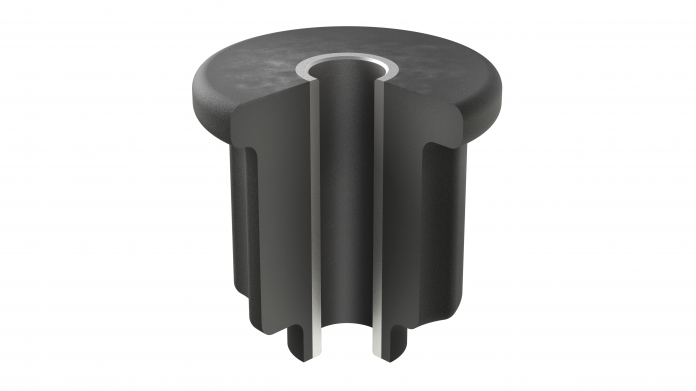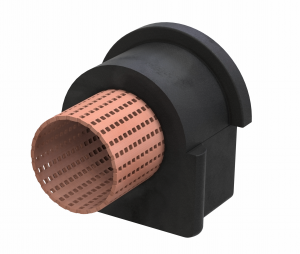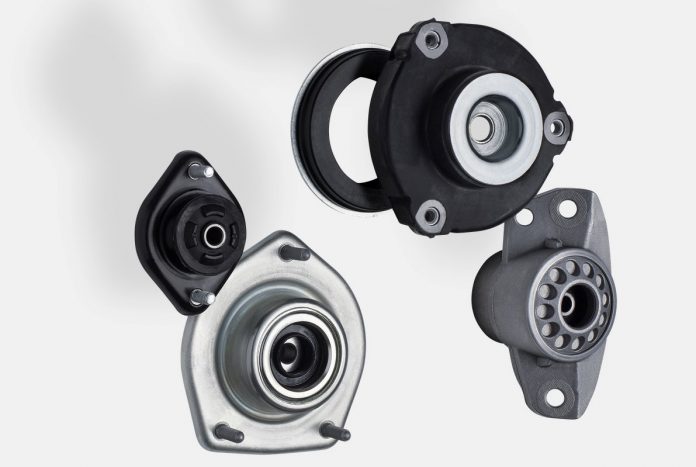The chassis plays a key role in driving comfort, safety, and dynamics – for example, when the road is uneven and when braking and evasive maneuvers are required. Particular attention is paid to the rubber-metal replacement parts between the individual chassis components – the chassis mounts.
The most important thing is to have good elastomeric properties in order to transmit power precisely to the road, to provide the necessary sound absorption, and to enable for optimal steering and driving behavior – even in critical situations. Here on the blog, we briefly introduce the most important chassis bearings.
Axle Beam Mount
The design of vehicles is constantly evolving. The desire for non-intrusive suspension systems that do not impact the interior of the vehicle has made it necessary to use a suspension sub-frame. These sub-frames are made of tubular steel or aluminum tubes and are mounted to the vehicle body with rubber-metal bushes.

Axle Beam Mount
Strut Top Mounts
The suspension strut mounting consists of a composite rubber bush mounted on the top of the damper and connected to the vehicle’s chassis. It is an integral part of the suspension strut assembly. Strut mountings can also be equipped with a bearing or bearing plate, which allows the strut to rotate with the steered wheels.
Control Arm Bush/Hydro Bushing
The elastomeric materials used in the production of rubber-metal parts are matched precisely to the technical requirements and loads of their specific fitting position. Despite all of this, passive rubber-metal components cannot absorb all of the vibrations within the chassis. As a result, hydraulically dampening elastomeric bearing – “Hydromounts” – were developed, which enable the isolating and dampening of vibrations.
Anti-Roll Bar Bushes
The anti-roll bar is mounted onto the vehicle’s sub-frame or chassis by means of two bushes. The positive connection of the bonded rubber bushes prevents relative movements between the anti-roll bar and the bonded rubber bush. The rotational movements of the anti-roll bar are absorbed in the mounting while the vehicle is being driven on a variety of road surfaces. This achieves a high degree of efficiency to reduce NVH (Noise, Vibrations, and Harshness) and increases driver comfort.

Anti-Roll Bar Bushes




